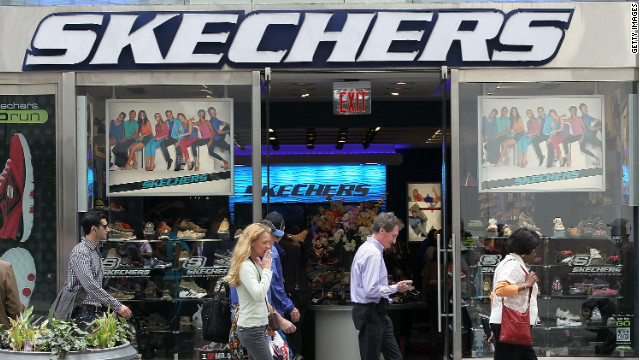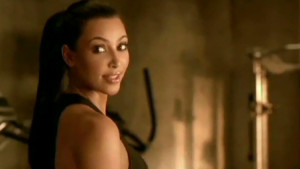帶你看懂美國食品標簽
李淼
春暖花開,家裡迎來了一撥兒又一撥兒從國內來旅遊度假的親朋。當個善於體察客人需求的好主人不容易,上周本人格外與時俱進地捧出各色自制果凍招待朋友家的小寶貝──“多吃點兒吧孩子,這裡面肯定沒皮鞋”。眾人先是笑成一團,然後就開始感慨美國食品的“安全”。我們的幸福和不幸經常來自比較。朋友們印象中美國食品的“安全”,來源於與我們熟悉的那個常常沖破底限的國度的對比。而美國食品的“安全”,也僅僅是做到了“無害”而已。
前幾年,我父母在美國超市裡發現了好吃便宜的 peanut butter,我那貪嘴又愛財的老爸滿懷著對美國食品的一腔信任,開始源源不斷地往北京“走私”花生醬。老兩口上頓 peanut butter 拌涼面、下頓 peanut butter烙糖餅,把國內質量可疑的芝麻醬遠遠甩出幾萬里。
沒出幾個月,我眼看著視頻中老太太臉上的皺紋都撐平了,果然倆人的血壓血糖膽固醇齊齊飆升。直到聽我照著包裝上的營養成分表逐條翻譯出來後他們才恍然大悟, 這哪裡是“安全”食品,簡直就是一桶定時炸彈。那些正準備一箱箱往中國拎美國奶粉果醬蜂蜜糖果的,請參考我父母“沒文化真可怕”的教訓,在超市結賬之前稍停一分鐘,先認真看看包裝上的芝麻小字兒。

李淼
圖一
這瓶花生醬(見圖一)的食品標簽上包括美國聯邦法律規定食品包裝上必須標注的六部分內容:
1、 Identification
這一部分包括產品的名稱、內容量以及生產商/包裝商/經銷商的名稱和聯絡方式。如果該公司沒有在所處城市電話薄中進行登記,還必須標注出帶有門牌號的詳細地址。
2、 Ingredients
配料的名單必須按照內容量的比例由大到小排序。比如,這罐花生醬配料的順序就是roasted peanuts, sugar, hydrogenated vegetable oils, salt。我那有高血壓糖尿病的父母,如果當初試著去研究一下這個配料單,這瓶美國花生醬未必能戰勝中國產的“三無”芝麻醬。
美國有一種花花綠綠水果味道的早餐麥圈很受小孩子喜歡,叫 Froot Loops(見圖二)。

李淼
圖二
這種原名 Fruit Loops的麥片,標簽上的十幾種配料中,根本就沒有水果的痕跡。雖然迫於壓力改名,但是產品“水果”的形象強烈深刻,商家這“圈”讓消費者一鑽就是幾十年。
在食品配料中,美國目前並沒有明確法律要求針對“轉基因食品”進行標注。這方面立法最大的困難是對於Genetically modified這 一概念難以劃定界限以及龐大利益群體的阻撓。盡管民間呼吁不斷,立法提案層出,但最終還是紛紛落馬。因為沒有相關立法,強調非轉基因食品標簽上可能會出現 如下措辭:GMO free/not genetically modified/not genetically engineered/no using of biotechnology。
3、 Serving Size
為 計算營養成分而設定的每餐食用量。這是非常重要的一個數量,也是一個商家帶著消費者做腦筋急轉彎的題目。如果不細看這個數量,很容易被後面的每日攝入量誤 導。比如,一小盒哈根達斯冰淇林,營養成分標注的飽和脂肪含量為每日攝入量的50%,這已經很驚人了──不過可能你決定豁出去放縱自己一下,當你三口兩口 把整盒都幹掉的時候才發現 serving size那小字寫的是1/2 cup!
4、 Nutrition Facts
美國於1990年起施行的營養標簽和教育法Nutrition Labeling and Education Act (NLEA)規定,食品根據每餐食用量標注營養成分含量。其中包括 calories, total fat/saturated and trans fat, cholesterol, sodium, total carbohydrates (dietary fiber and sugars)和 protein。除此之外,還需要針對主要的微量元素──維他命A、C和鈣、鐵──進行標注。如果食品的包裝上出現了關於某種特別維他命或礦物質的宣傳,那麼這種成分也必須被單列出。
5、 Daily Values

圖三
依 照美國食品和藥物管理局(Food and Drug Administration,FDA)的規定,營養標簽上還需包括每日攝入量百分比。這個總量是以每人每天攝入2000或2500卡路裡熱量計算的(不 適用孕婦、哺乳期婦女、四歲下兒童)。看懂這個計算就能讓我們避免被商品包裝上的營養宣傳口號誤導。比如,號稱零脂肪含量的這一小盒果凍粉(見圖三、圖 四)標簽上寫著每一個serving只有80個卡洛裡,糖的含量是一天攝入總量的6%。但是當我們抱著健康減肥的幻想,把一盒不含工業明膠的放心果凍做好 吃下去,會發現這一盒實際包括四個servings。做做乘法,就會發現你幾口輕易地吞下了一頓飯的熱量。

李淼
圖四
6、 Health Claims
這 部分是FDA對於商家五花八門自吹自擂行為進行的約束,具體的條文十分細致。比如 less fat/low fat/fat free 這三種脂肪含量的描述就被嚴格的定義:less fat指比同類普通食品減少25%或以上的脂肪;low fat 指每餐食用量少於三克脂肪;fat free指每餐食用量少於0.5克脂肪。這一文件可以在FDA網站上的“行業指南:食品標簽指南”(Guidance for Industry: A Food Labeling Guide)上找到。
最後要提醒大家的也是在美國食品標簽管理上顯得最混亂的一個區域──保質期。在美國購買的食品上都能找到生產商“自覺”標注的保質期。因為沒有統一格式,就需要我們用點心思來辨識。“Sell by 06/01/12”是生產商用來約束零售商的日期,並不代表這個食品到六月一日那天就不能食用。
"Best if Used By (or Before)06/01/12" 最佳食用期──是推薦給消費者在此日期前食用。這一食品過期後可能會缺失風味或營養,但不代表不能食用。 "Use By 06/01/12" 生產商判斷在此日後產品不再適合食用,應該立刻丟棄。"Closed/coded”日期是產品包裝的日期,多見於超市生鮮類食品。除此之外,有些餅幹類食 品的保質期是用火星文標注的,只能請消費者去廠家網站上自行破解。
為什麼這麼亂?因為除了嬰兒配方奶粉,美國沒有聯邦法律規定食品必須 標注保質期。仔細想想,實際上法律在這方面的“空白”也是為了保護消費者的利益──-即食品制造者無法以產品“超出保質期”為由推脫責任。在美國出售過期 食品違法嗎?答案是不。但是不會有人這麼做,因為消費者的健康安全是這個社會沒人敢觸碰的底限。
'Shape-ups' shoemaker fined $40 million; FTC cites bogus fitness claims
May 17, 2012 -- Updated 0529 GMT (1329 HKT)

Skechers agrees to pay a $40 million fine over "unfounded claims" about its Shape-ups shoes, the FTC says.
STORY HIGHLIGHTS
- FTC official: Skechers' claims "went beyond stronger and more toned muscles"
- They also said shoes would help "weight loss and cardiovascular health," official says
- Customers who bought Skechers "toning" shoes will be eligible for refunds
- Sales of toning footwear approached $1 billion industrywide in 2010, FTC says
According to the FTC,
Skechers agreed to pay a hefty $40 million fine to settle charges the
California-based company deceived consumers by making "unfounded claims
that Shape-ups would help people lose weight, and strengthen and tone
their buttocks, legs and abdominal muscles."
The company enlisted high-profile celebrities Kim Kardashian and Brooke Burke to sell the shoes.
Besides Shape-ups,
Skechers also made deceptive claims about other products including
Resistance Runner, Toners and Tone-up shoes, the FTC alleges.
 Stars don't get how 'Shape-ups' work
Stars don't get how 'Shape-ups' work
"Skechers' unfounded
claims went beyond stronger and more toned muscles. The company even
made claims about weight loss and cardiovascular health," said David
Vladeck, director of the FTC's Bureau of Consumer Protection.
As part of the
settlement, customers who bought Skechers "toning" shoes will be
eligible for refunds either directly from the FTC or through a
court-approved class-action lawsuit, officials said.
Wednesday's announcement
was the culmination of a months-long investigation involving the FTC and
attorneys general from 44 states and the District of Columbia.
FTC officials highlighted
a Skechers television ad featuring the endorsement of chiropractor Dr.
Steven Gautreau. In the ad, Gautreau cited an "independent" clinical
study he conducted testing the shoes' benefits.
The FTC said the study
results Gautreau promoted weren't factual, and alleged the company hid
the fact that Gautreau is married to a Skechers marketing executive. The
FTC also said Gautreau was compensated for his endorsement, which
wasn't made clear in the commercial.
Skechers introduced
Shape-ups in 2009, and sales peaked a year later. The FTC called
Skechers an industry leader in the booming business of toning footwear.
Estimated sales were close to $1 billion industrywide in 2010, the FTC
said. The toning shoes Skechers sold cost between $60 and $100 a pair.
As part of an expensive
campaign to promote the fitness benefits of Shape-ups, the company
unveiled a scantly dressed Kim Kardashian peddling the shoes during the
Super Bowl in 2011.
Brooke Burke's ads
claimed the shoes would help improve her cousin's posture, mother's legs
and give her brother a tighter core. Additionally, Burke's ad told
consumers "the newest way to burn calories and tone and strengthen
muscles was to tie their Shape-up shoe laces," the FTC said.
"The FTC's message, for
Skechers and other national advertisers, is to shape up your
substantiation or tone down your claims," Vladeck said.
Under the FTC's
settlement, the company is barred from any advertising making similar
claims unless it's backed up by scientific evidence.
What Skechers plans to
do with the Shape-ups brand remains to be seen. An ad featuring Burke
touting "the next generation of Shape-ups" remained on the company's
website Wednesday morning.
According to the FTC,
the commission files a complaint when it has "reason to believe" that
the law has been or is being violated. The FTC says despite Skechers
agreement to pay a fine, the complaint is not a court ruling or an
admission that the company violated any law.
沒有留言:
張貼留言